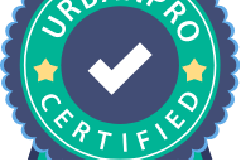I teach violin online or face-to-face to focused and disciplined children and adults
For the online violin lesson, each student must have at least:
-A smart phone or computer with a smooth connection.
-A table and chair without armrests for posture
-A calm and lighted room.
-A white notebook.
-His musical instrument that and the violin.
Phase 1: Getting Started
Goal: Familiarize yourself with the instrument and basic posture.
Learn violin parts and bow parts.
How to hold the violin correctly.
Proper bow hold (relaxed fingers, curved thumb).
Learn tuning (with tuner or piano).
Open string exercises:
Long bows on G, D, A, E.
Practice producing clear, steady tone.
practice (15–20 min):
5 min posture & bow hold check.
10 min long bows on open strings.
5 min listening/tuning practice.
Phase 2: Left-Hand Basics
Goal: Start finger placement & ear training.
Learn about finger numbers (1 = index, 2 = middle, etc.).
Finger placement on D & A strings (simple scales).
Exercises for finger strength and coordination.
Begin simple rhythms (quarter, half, whole notes).
practice (20–30 min):
5 min bow hold & open strings.
10 min finger placement drills (D major scale).
10 min simple tunes (like “Twinkle, Twinkle” with rhythms).
Phase 3: Bowing & Rhythm
Goal: Control bowing & improve tone.
Practice bowing in different parts of the bow (tip, middle, frog).
Dynamics: soft vs loud bow pressure.
Learn simple slurs (two notes in one bow).
Introduce easy songs with varied rhythms.
practice (30 min):
5 min scales (D major, G major).
10 min bowing exercises (long-short, slurs).
10 min songs with simple rhythms.
5 min listening to violin music.
Phase 4: Playing Simple Pieces
Goal: Play short beginner-level songs.
Learn G major and A major scales.
Begin simple folk songs or Suzuki Book 1 pieces.
Work on intonation (playing in tune).
Play with backing tracks or metronome.
practice (30–40 min):
5 min warm-up with open strings.
10 min scales & finger exercises.
15 min practice of 1–2 songs.
5–10 min review & relaxation.







